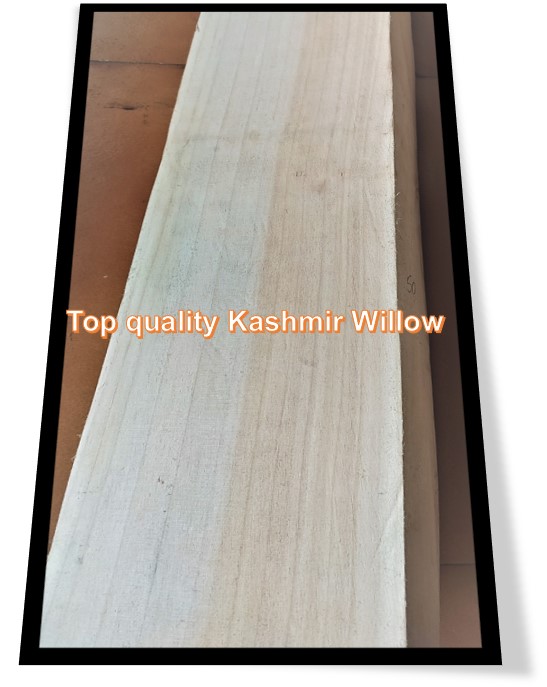CRICKET BAT WILLOW GRADING
What grade is this cricket bat? One of the most popular question these days in the cricket playing community. In this article we will explore more about how possibly the grading typically is done by the suppliers from South England & Kashmir, India & how most of the cricket bat manufacturers possibly grade them.
Please note the information is based on combination of our manufacturing experience, knowledge about the industry and some of the practical material available on the internet.

Let’s start with what is popular and commonly used - English Willow that as we know are primarily supplied out of South England (Essex & Suffolk). None or most of the suppliers do not disclose their criteria to grade a cleft, however its evident that one the most prominent criteria is the look of the cleft, to be precise lesser the blemishes, knots, speck etc the better the grading. In fact, most of them also claim that there is no way to assess the performance/ping of the “cleft” however that’s not entirely true as at Cricket Gearz we have a mechanism to identify that and hence the reason that we provide warranty on our bats for performance/ping.
A typical grade 1 English Willow part made bat can look like this ![]()
One of the other important criteria to grade by the suppliers is the number of grains, if its less than 5-6, not reasonably straight, not evenly spaced all through the cleft its generally graded low.
When it comes to the grading of Kashmir Willow, apparently its not that well defined and organized by the suppliers, though a few do grade them 1, 2 & 3 however the criteria is primarily the looks and weight. Since majority of the Kashmir Willow supply isn’t that well organized, professional compared to the English Willows from England the grading typically is more or less dependent upon the manufacturers.

A typical grade 1/top grade part made Kashmir Willow would look like this ![]()
These are in all possibility the “main” criteria from a supplier’s perspective so that they can declare what they are supplying and price it accordingly. Many years back these clefts were only graded as 1,2 & 3 however in the recent few years many more grades have been introduced to cater to sub-continent manufacturers, primarily India.
One of the largest supplier of English Willow is J S Wright & Sons Ltd and they have provided a lot of details from the tree (Salix Alba Caerulea) to the willow, its imperfections etc and can be found here - http://www.cricketbatwillow.com/
If you are interested to know the difference between the various types of the willow then its detailed in our blog which is available here
Now these gradings do change when a manufacturer assess them when they receive it, it may again change when the initial trimming is done to the cleft and may change again when its finished to a bat, as manufacturer our observation has been that the grading that the suppliers do from the aesthetics, in most cases generally does not change, in many cases the cleft that was graded low turns out to be better after the initial trim, in very few/rare cases turns out to be lower than what was graded.
If not all, most of the manufacturers grading is based on the looks of the willow, very few (one of them being us) grade the willow based on first performance/ping of the bat and then the looks. We at Cricket Gearz generally discard the willows that do not have the ping/performance to our standard and its mentioned on all our bats, with the warranty details. Its unfortunate that most manufacturer do not give preference to performance over looks, however the other way around, though ping is the most important aspect of a cricket bat. Always remember, it’s a natural product and not all willows are same, just as the looks vary, the ping & life varies as well.
To summarize, all willows that are from Salix alba Caerulea tree supplied from England & Kashmir generally performs once well knocked and seasoned, a very small percentage of them do not perform & must be discarded atleast by the manufacturer so that the grading isn’t just about the looks of the willow. Majority of the imperfections in the willow do not hamper the performance, however too many, too big of them should be avoided.
